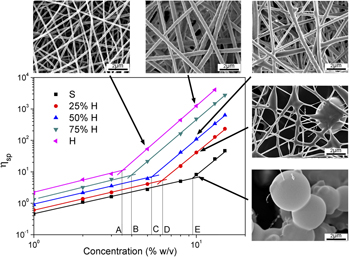Crossref Citations
This article has been cited by the following publications. This list is generated based on data provided by
Crossref.
Cordie, Travis
Harkness, Ty
Jing, Xin
Carlson-Stevermer, Jared
Mi, Hao-Yang
Turng, Lih-Sheng
and
Saha, Krishanu
2014.
Nanofibrous Electrospun Polymers for Reprogramming Human Cells.
Cellular and Molecular Bioengineering,
Vol. 7,
Issue. 3,
p.
379.
Mi, Hao‐Yang
Palumbo, SunMi
Jing, Xin
Turng, Lih‐Sheng
Li, Wan‐Ju
and
Peng, Xiang‐Fang
2014.
Thermoplastic polyurethane/hydroxyapatite electrospun scaffolds for bone tissue engineering: Effects of polymer properties and particle size.
Journal of Biomedical Materials Research Part B: Applied Biomaterials,
Vol. 102,
Issue. 7,
p.
1434.
Mi, Hao‐Yang
Salick, Max R.
Jing, Xin
Crone, Wendy C.
Peng, Xiang‐Fang
and
Turng, Lih‐Sheng
2015.
Electrospinning of unidirectionally and orthogonally aligned thermoplastic polyurethane nanofibers: Fiber orientation and cell migration.
Journal of Biomedical Materials Research Part A,
Vol. 103,
Issue. 2,
p.
593.
Mi, Hao‐Yang
Jing, Xin
Salick, Max R.
Cordie, Travis M.
Peng, Xiang‐Fang
and
Turng, Lih‐Sheng
2015.
Properties and fibroblast cellular response of soft and hard thermoplastic polyurethane electrospun nanofibrous scaffolds.
Journal of Biomedical Materials Research Part B: Applied Biomaterials,
Vol. 103,
Issue. 5,
p.
960.
Chung, S.
and
Webster, T.J.
2016.
Advances in Polyurethane Biomaterials.
p.
503.
Wu, Tongfei
and
Chen, Biqiong
2017.
Facile Fabrication of Porous Conductive Thermoplastic Polyurethane Nanocomposite Films via Solution Casting.
Scientific Reports,
Vol. 7,
Issue. 1,
Mi, Hao-Yang
Jing, Xin
Napiwocki, Brett N.
Hagerty, Breanna S.
Chen, Guojun
and
Turng, Lih-Sheng
2017.
Biocompatible, degradable thermoplastic polyurethane based on polycaprolactone-block-polytetrahydrofuran-block-polycaprolactone copolymers for soft tissue engineering.
Journal of Materials Chemistry B,
Vol. 5,
Issue. 22,
p.
4137.
Akduman, Cigdem
and
Kumbasar, Emriye Perrin Akçakoca
2017.
Aspects of Polyurethanes.
Mi, Hao-Yang
Jing, Xin
Napiwocki, Brett N.
Li, Zhu-Tong
Turng, Lih-Sheng
and
Huang, Han-Xiong
2018.
Fabrication of fibrous silica sponges by self-assembly electrospinning and their application in tissue engineering for three-dimensional tissue regeneration.
Chemical Engineering Journal,
Vol. 331,
Issue. ,
p.
652.
Miranda, Kelvi W. E.
Mattoso, Luiz H. C.
Bresolin, Joana D.
Hubinger, Silviane Z.
Medeiros, Eliton S.
and
de Oliveira, Juliano E.
2019.
Polystyrene bioactive nanofibers using orange oil as an ecofriendly solvent.
Journal of Applied Polymer Science,
Vol. 136,
Issue. 15,
Wang, Lina
Cao, Weiwei
Wang, Xi
Li, Peili
Zhou, Jie
Zhang, Gaoke
Li, Xin
and
Xing, Xiaodong
2019.
Biodegradable silver-loaded polycation modified nanodiamonds/polyurethane scaffold with improved antibacterial and mechanical properties for cartilage tissue repairing.
Journal of Materials Science: Materials in Medicine,
Vol. 30,
Issue. 4,
Shaker, A
Hassanin, Ahmed H
Shaalan, N M
Hassan, M A
and
El-Moneim, Ahmed Abd
2019.
Micropatterned flexible strain gauge sensor based on wet electrospun polyurethane/PEDOT: PSS nanofibers.
Smart Materials and Structures,
Vol. 28,
Issue. 7,
p.
075029.
Li, Biyun
Liu, Yinhu
Wei, Shuo
Huang, Yuting
Yang, Shuwen
Xue, Ye
Xuan, Hongyun
and
Yuan, Huihua
2020.
A Solvent System Involved Fabricating Electrospun Polyurethane Nanofibers for Biomedical Applications.
Polymers,
Vol. 12,
Issue. 12,
p.
3038.
Rasouli, Maryam
Pirsalami, Sedigheh
and
Zebarjad, Seyed Mojtaba
2020.
Study on the formation and structural evolution of bead‐on‐string in electrospun polysulfone mats.
Polymer International,
Vol. 69,
Issue. 9,
p.
822.
Lin, Shengnan
Fu, Xuewei
Luo, Ming
Wang, Chenxu
and
Zhong, Wei-Hong
2021.
Interface-tailored forces fluffing protein fiber membranes for high-performance filtration.
Separation and Purification Technology,
Vol. 278,
Issue. ,
p.
119570.
Filip, Petr
Zelenkova, Jana
and
Peer, Petra
2021.
Evaluation of an onset of electrospun beadless poly(ethylene oxide) nanofibres.
Journal of Applied Polymer Science,
Vol. 138,
Issue. 11,
Gholami, Ahmad
Abdoluosefi, Homeira Emad
Riazimontazer, Elham
Azarpira, Negar
Behnam, Mohamadali
Emami, Farzin
Omidifar, Navid
and
Yamaoka, Tetsuji
2021.
Prevention of Postsurgical Abdominal Adhesion Using Electrospun TPU Nanofibers in Rat Model.
BioMed Research International,
Vol. 2021,
Issue. 1,
Visser, Dmitri
Bakhshi, Hadi
Rogg, Katharina
Fuhrmann, Ellena
Wieland, Franziska
Schenke-Layland, Katja
Meyer, Wolfdietrich
and
Hartmann, Hanna
2022.
Green Chemistry for Biomimetic Materials: Synthesis and Electrospinning of High-Molecular-Weight Polycarbonate-Based Nonisocyanate Polyurethanes.
ACS Omega,
Vol. 7,
Issue. 44,
p.
39772.
Fathi-Karkan, Sonia
Banimohamad-Shotorbani, Behnaz
Saghati, Sepideh
Rahbarghazi, Reza
and
Davaran, Soodabeh
2022.
A critical review of fibrous polyurethane-based vascular tissue engineering scaffolds.
Journal of Biological Engineering,
Vol. 16,
Issue. 1,
Gradinaru, Luiza Madalina
Bercea, Maria
Vlad, Stelian
Barbalata Mandru, Mihaela
Drobota, Mioara
Aflori, Magdalena
and
Ciobanu, Romeo Cristian
2022.
Preparation and characterization of electrospun magnetic poly(ether urethane) nanocomposite mats: Relationships between the viscosity of the polymer solutions and the electrospinning ability.
Polymer,
Vol. 256,
Issue. ,
p.
125186.



